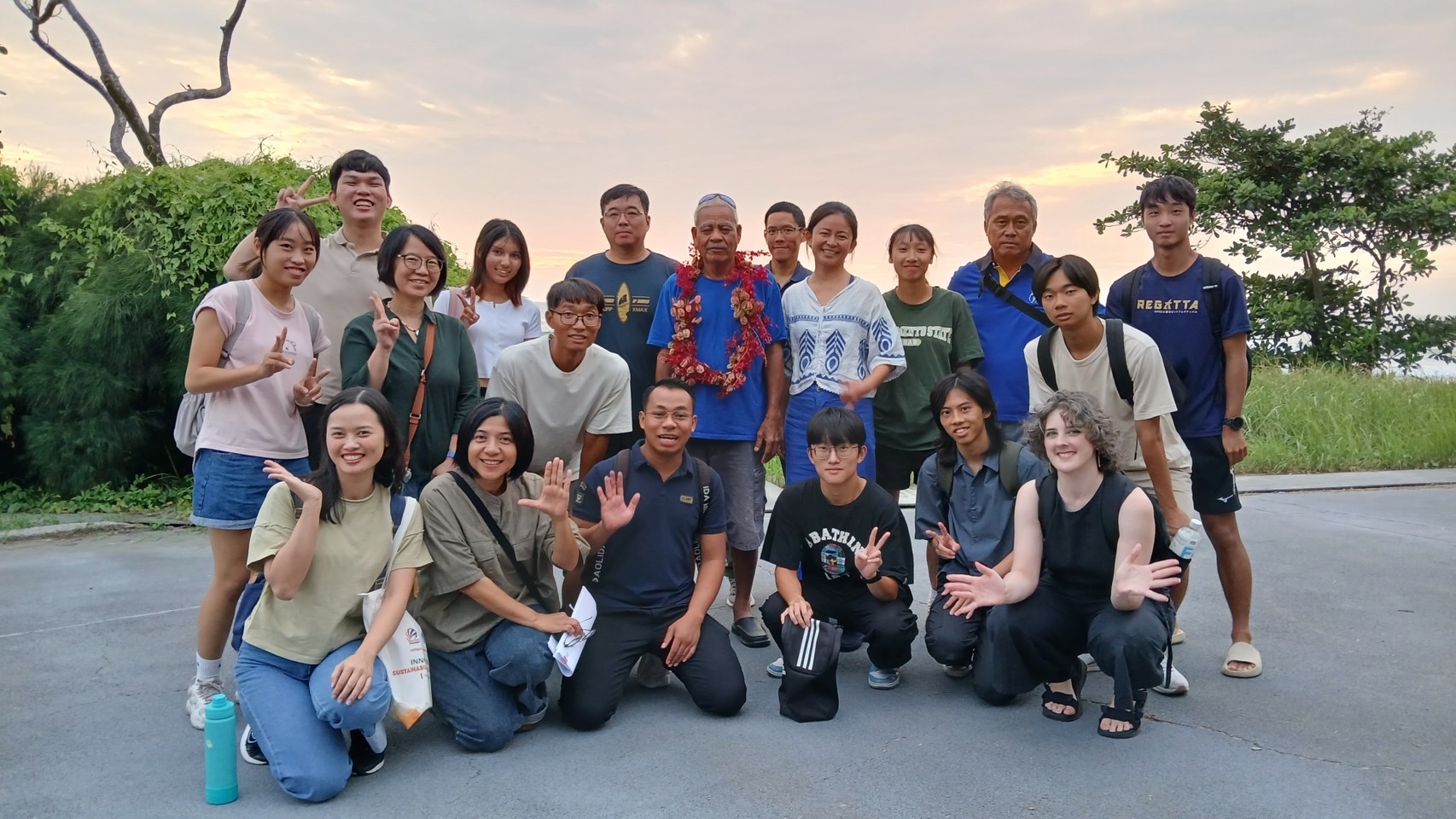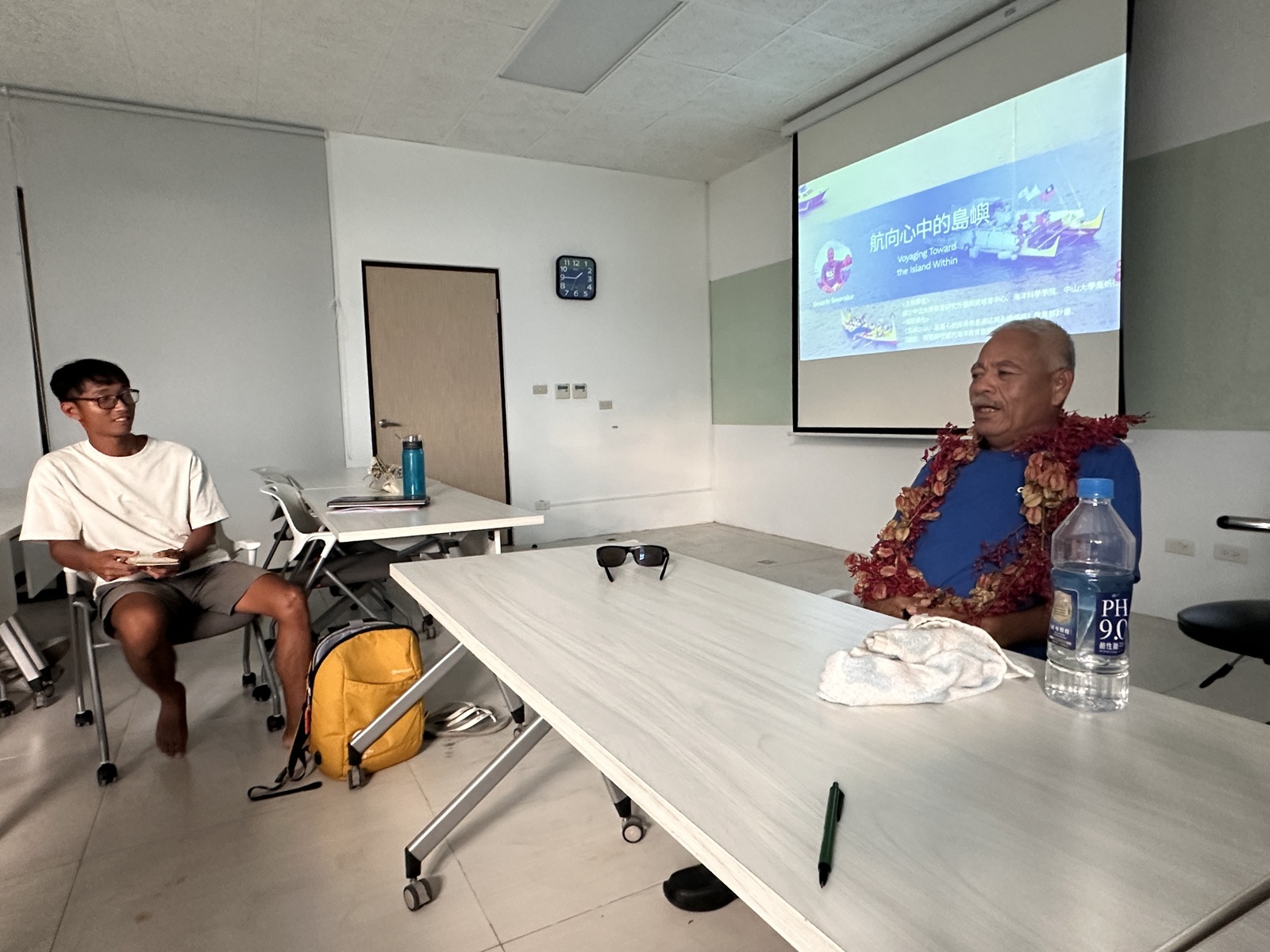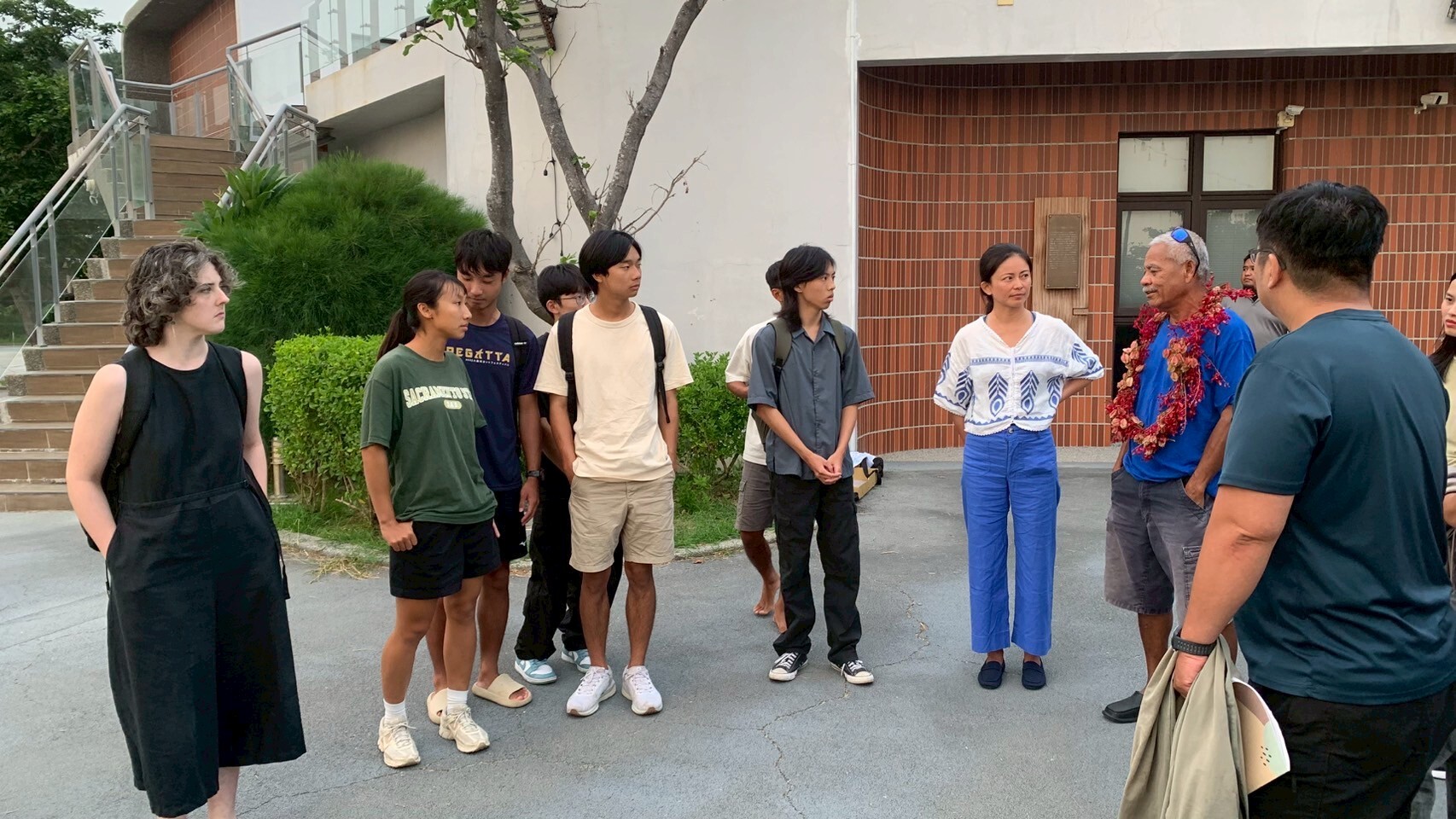Navigating the island within: NSYSU experiences the philosophy of the Austronesian wayfinding guided by stars and waves





2025-11-19
(Provided by Institute of Education) How did people find their way across the vast Pacific before compasses, maps, or GPS existed? National Sun Yat-sen University (NSYSU) invited Grand Master Navigator Sesario Sewralur from Satawal in Micronesia to deliver an inspiring lecture on campus: "Navigating the Island Within: Wisdom and Spirit of Traditional Pacific Wayfinding."
Co-organized by the Institute of Education and Center for Teacher Education, College of Marine Sciences, and the NSYSU Sailing Club—and supported by the Ministry of Education's "Island DNA: Stargazer's Wayfinding in Pursuit of Austronesian Connections and Sustainable Pathways" initiative and the USR project "Setting Sail: Ocean Education for Exploration and Conservation"—the bilingual lecture opened a rare window into the world of non-instrumental navigation, a traditional method that relies solely on the stars, waves, wind, and bird behavior.
In the vast blue expanse of the Pacific, the ocean has never been a separation but a connection. Sesario, the son of legendary navigator Mau Piailug, is dedicated to revitalizing Austronesian wayfinding traditions. Mau Piailug had helped revive lost navigation knowledge in Hawai‘i, sparking the "One Ocean, One Family" cultural movement that reminds us of the ocean as humanity's shared lifeline.
During the lecture, Sesario vividly recounted the story of the double-hulled canoe Alingano Maisu, which sailed from Palau to Taiwan without any modern instruments—guided only by stars, wave patterns, and ocean swells. Navigators read the rising and setting points of stars, the rhythm of the waves, the flight paths of seabirds, and even the color and shape of clouds to determine direction and position. This ability to read nature is honed through long-term observation and collective memory.
Traditional navigators are not only skilled sailors but also carriers of cultural knowledge. Sesario explained that Micronesian wayfinding knowledge is passed down orally, forming a vast and systematic mental map. In the Satawalese language, every sea route and hidden reef has its own name. Experienced navigators can recognize their location by the shape of the waves and seabed contours, much like reading an unwritten encyclopedia of the ocean.
These knowledge networks extend deep into language and culture. The interconnected "ocean routes" familiar to navigators link Micronesia with Taiwan, Japan, and the Philippines, resembling an intricately woven "fishing net" that symbolizes the deep ancestral connections across Austronesian peoples.
In Austronesian cultures, navigation is more than a technical craft—it is a discipline of the mind and spirit. The pwo initiation ceremony marks the moment a navigator fully internalizes all knowledge, stepping into the ocean with humility and clarity. Throughout the voyage, trust within the crew, respect for nature, and heightened sensory awareness form the spiritual core of wayfinding.
At the lecture's conclusion, Sesario led participants to the shoreline to observe the sun's descent. "For navigators," he said, "sunrise and sunset are the oldest compass. The sun's position and the shape of the clouds tell us tomorrow's wind, waves, and weather—whether we can sing under the stars tonight or must check every rope and sail." This hands-on experience allowed students to truly feel the wisdom and beauty of reading the sky and sea.
The event was coordinated across three NSYSU units, combining themes of sustainability education, marine conservation, recreation, and well-being. Professor Paichi Pat Shein from the Institute of Education shared: "Through Pacific wayfinding, we hope students learn the attitude of 'learning from nature.' The courage, teamwork, and deep respect for nature shown by navigators are lessons students can carry into their lives." Sailing Club advisor and instructor from the Center for Physical and Health Education, Tsai Jui-Yang, added: "Sailing relies heavily on sensing wind and water. When paired with the cultural depth and sustainability values of traditional navigation, students can better appreciate the harmony between humans and nature."
In a world dominated by digital navigation, Sesario Sewralur offers more than ancient techniques—he offers a philosophy of reconnecting with nature. As he said, "The stars and waves have never left us. If we just look up and listen, the ocean will guide us again—back to the island within."
(Edited by Public Affairs Division)
